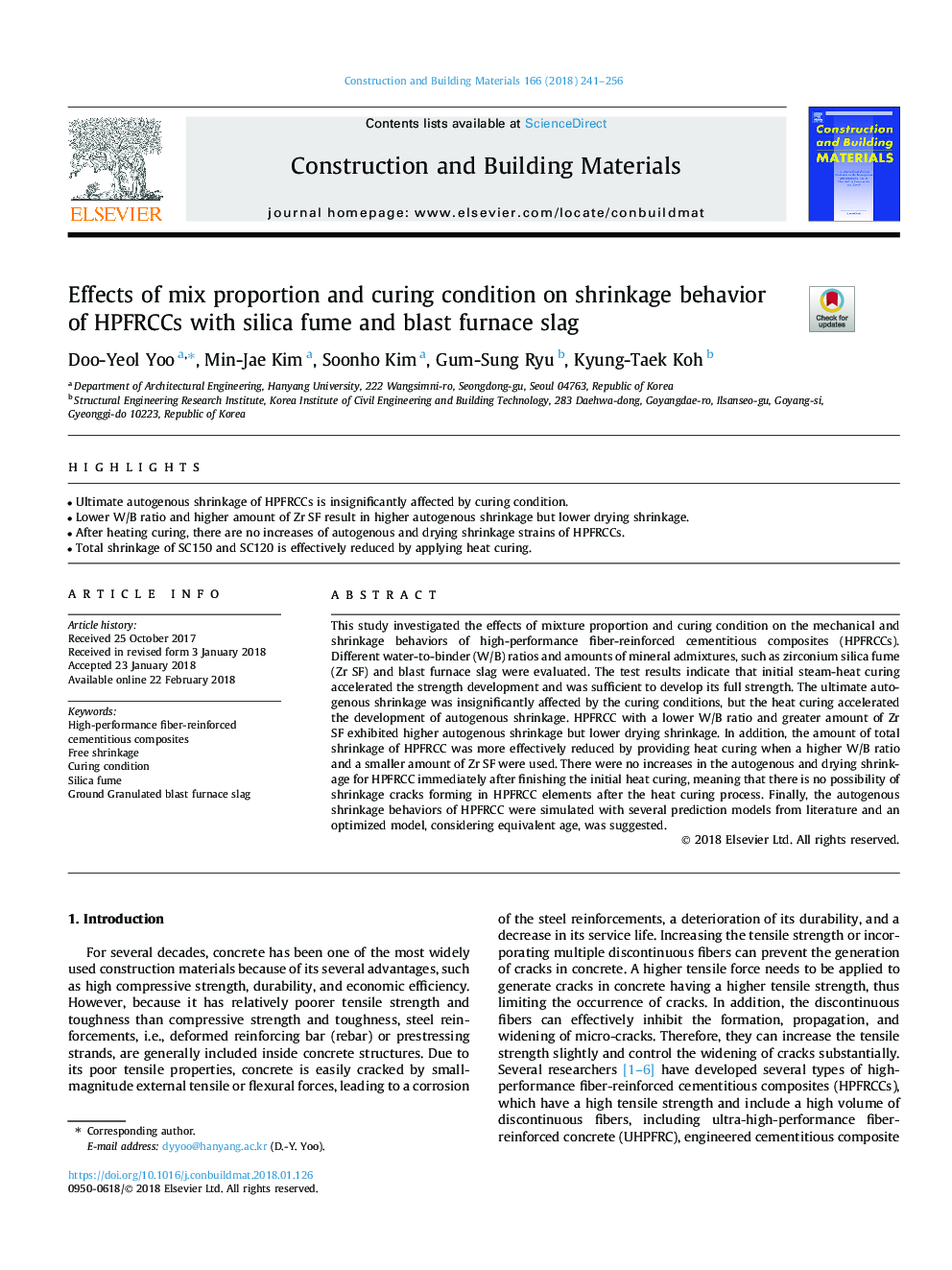| Article ID | Journal | Published Year | Pages | File Type |
|---|---|---|---|---|
| 6715216 | Construction and Building Materials | 2018 | 16 Pages |
Abstract
This study investigated the effects of mixture proportion and curing condition on the mechanical and shrinkage behaviors of high-performance fiber-reinforced cementitious composites (HPFRCCs). Different water-to-binder (W/B) ratios and amounts of mineral admixtures, such as zirconium silica fume (Zr SF) and blast furnace slag were evaluated. The test results indicate that initial steam-heat curing accelerated the strength development and was sufficient to develop its full strength. The ultimate autogenous shrinkage was insignificantly affected by the curing conditions, but the heat curing accelerated the development of autogenous shrinkage. HPFRCC with a lower W/B ratio and greater amount of Zr SF exhibited higher autogenous shrinkage but lower drying shrinkage. In addition, the amount of total shrinkage of HPFRCC was more effectively reduced by providing heat curing when a higher W/B ratio and a smaller amount of Zr SF were used. There were no increases in the autogenous and drying shrinkage for HPFRCC immediately after finishing the initial heat curing, meaning that there is no possibility of shrinkage cracks forming in HPFRCC elements after the heat curing process. Finally, the autogenous shrinkage behaviors of HPFRCC were simulated with several prediction models from literature and an optimized model, considering equivalent age, was suggested.
Keywords
Related Topics
Physical Sciences and Engineering
Engineering
Civil and Structural Engineering
Authors
Doo-Yeol Yoo, Min-Jae Kim, Soonho Kim, Gum-Sung Ryu, Kyung-Taek Koh,
